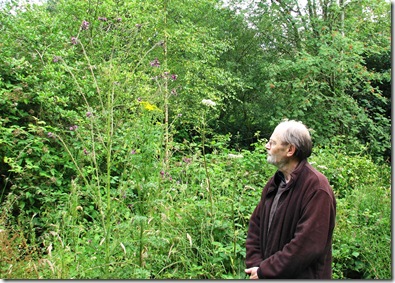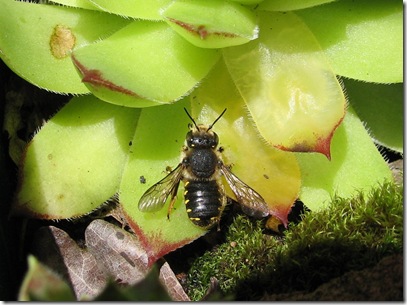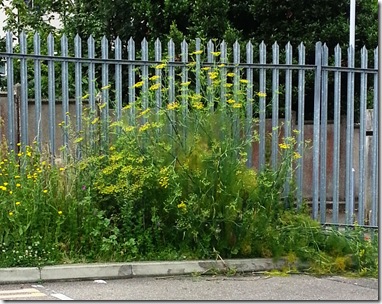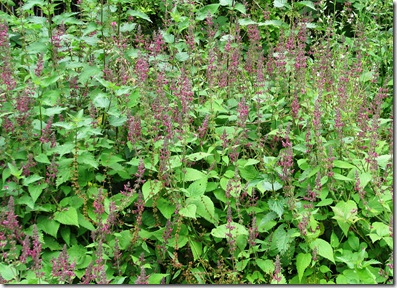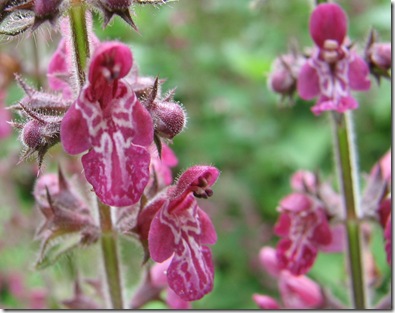Many of the wild plants in our beautifully tidy garden have grown much taller than usual, perhaps as a result of the very wet last three and a half months.
I am about 1.8 metres tall and the marsh thistles, ragwort and hogweed behind and to the left of me are as tall or taller.
Behind me, in the distance, the berries on the rowan tree are starting to turn red. I always take this as a sign that summer is moving into autumn, but at least it is happening at the usual time this year.
The wool carder bees (Anthidium manicatum) are on the wing again and, as usual, seem particularly fond of my houseleeks. We have provided them with plenty of woolly leaved plants for the females to ;card' and line their nests.
